Wondering what vegetables are in season in the summer? We’re covering our favorite summer vegetables (and how to use them!)
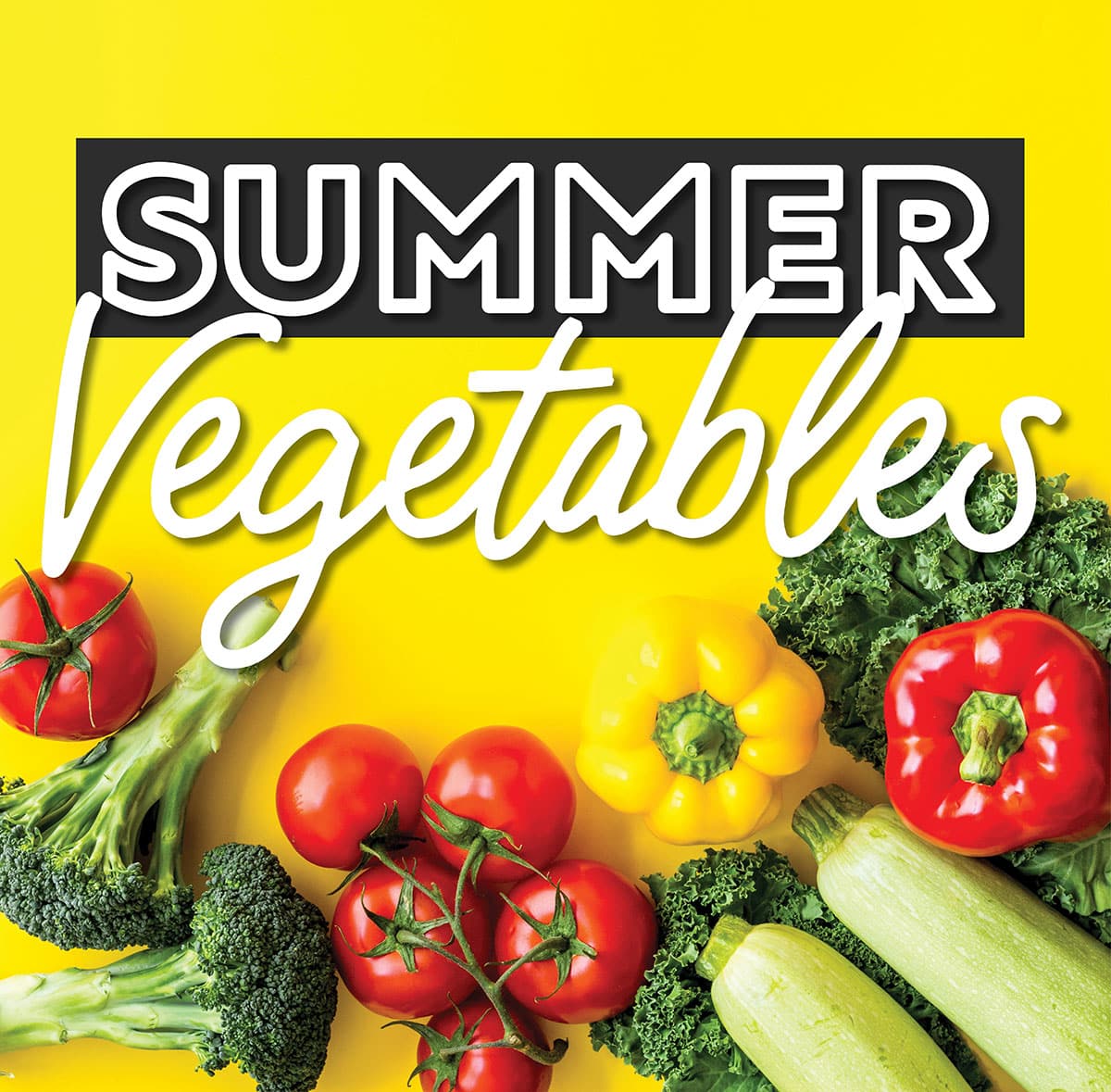
Welcome to the world of delicious summer vegetables! As we approach the warmest months of the year, it’s the perfect time to explore the bounty of seasonal produce that America has to offer.
While many vegetables can be enjoyed year-round thanks to imports, there’s nothing quite like savoring a vegetable at the peak of its flavor and nutrition.
In this article, we’ll introduce you to 21 of America’s most beloved summer vegetables, many of which are easy to grow in your own backyard or balcony. And to make the most of these tasty treats, we’ll also share some of our favorite recipes that showcase their unique flavors and textures. So grab your gardening gloves and get ready to enjoy the taste of summer! Happy Cooking!
Spring Trivia!
What is the first day of summer? (scroll to the end of this post for the answer!)
1. April 31st
2. June 21st
3. July 4th
4. August 2nd
Popular Summer Vegetables
- Avocado
- Basil
- Bell Peppers
- Broccoli
- Carrots
- Celery
- Corn
- Cucumbers
- Eggplant
- Snap Peas
- Green Beans
- Hot Peppers
- Mushrooms
- New Potatoes
- Okra
- Radish
- Rhubarb
- Tomatillos
- Tomatoes
- Yellow Squash
- Zucchini
Avocado
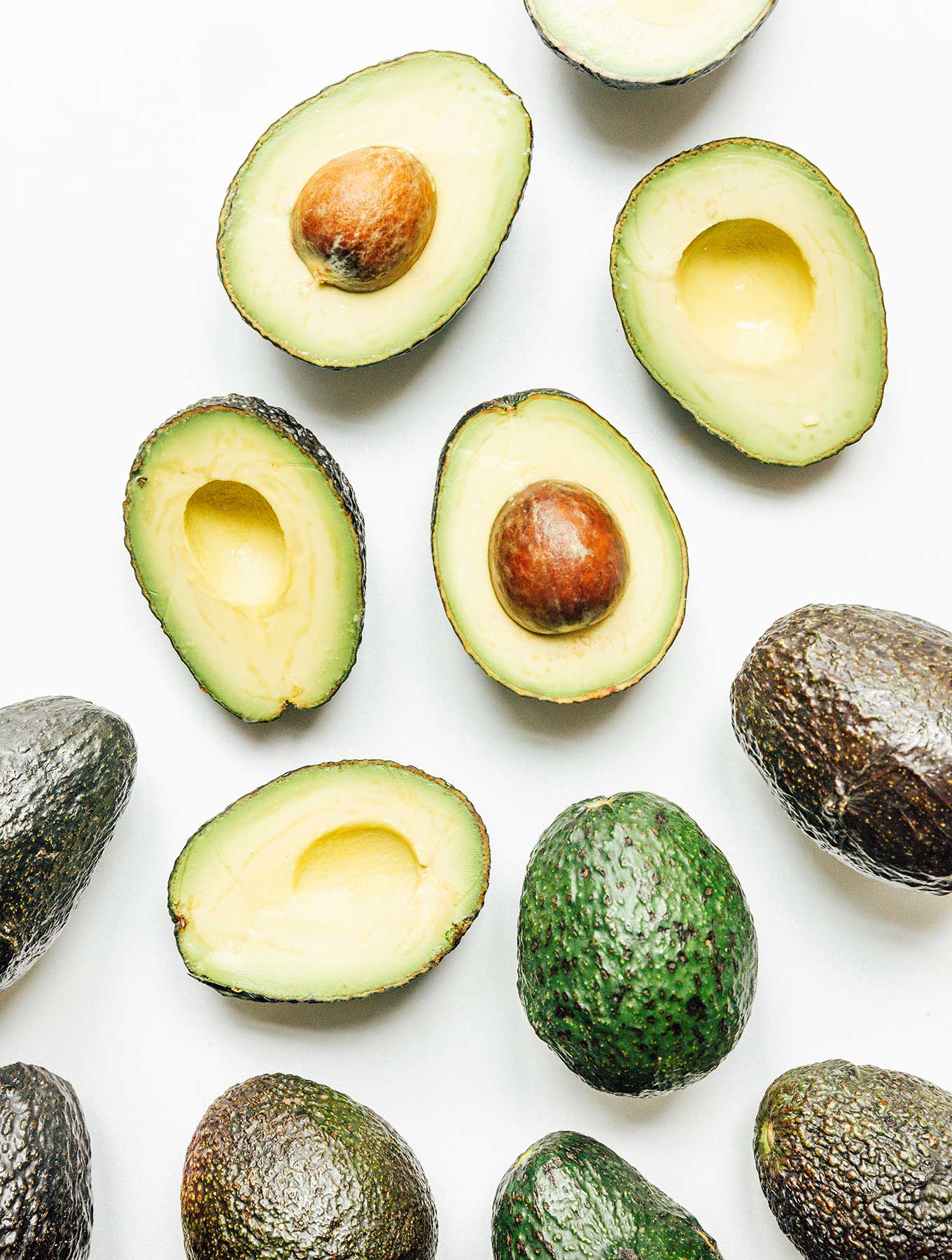
Seasonality: Avocados are a beloved fruit that can add a creamy, flavorful touch to any meal. But when is the best time to enjoy them? In general, the peak of avocado season in the United States runs from February to September, with California avocados typically at their freshest from April to August.
Selecting: When shopping for avocados, it’s important to choose those that are ripe and ready to eat. A ripe avocado should yield slightly to gentle pressure, but not feel mushy or overly soft. If the avocado is still firm, it can be ripened at room temperature for a few days, or placed in a paper bag with an apple or banana to speed up the process.
Storing: When storing ripe avocados, they can be refrigerated to slow down the ripening process and keep them fresh for a few more days (or freeze your avocados for even longer!). So next time you’re craving some avocado toast or healthy guacamole, make sure to choose a perfectly ripe avocado for the best flavor and texture.
Basil
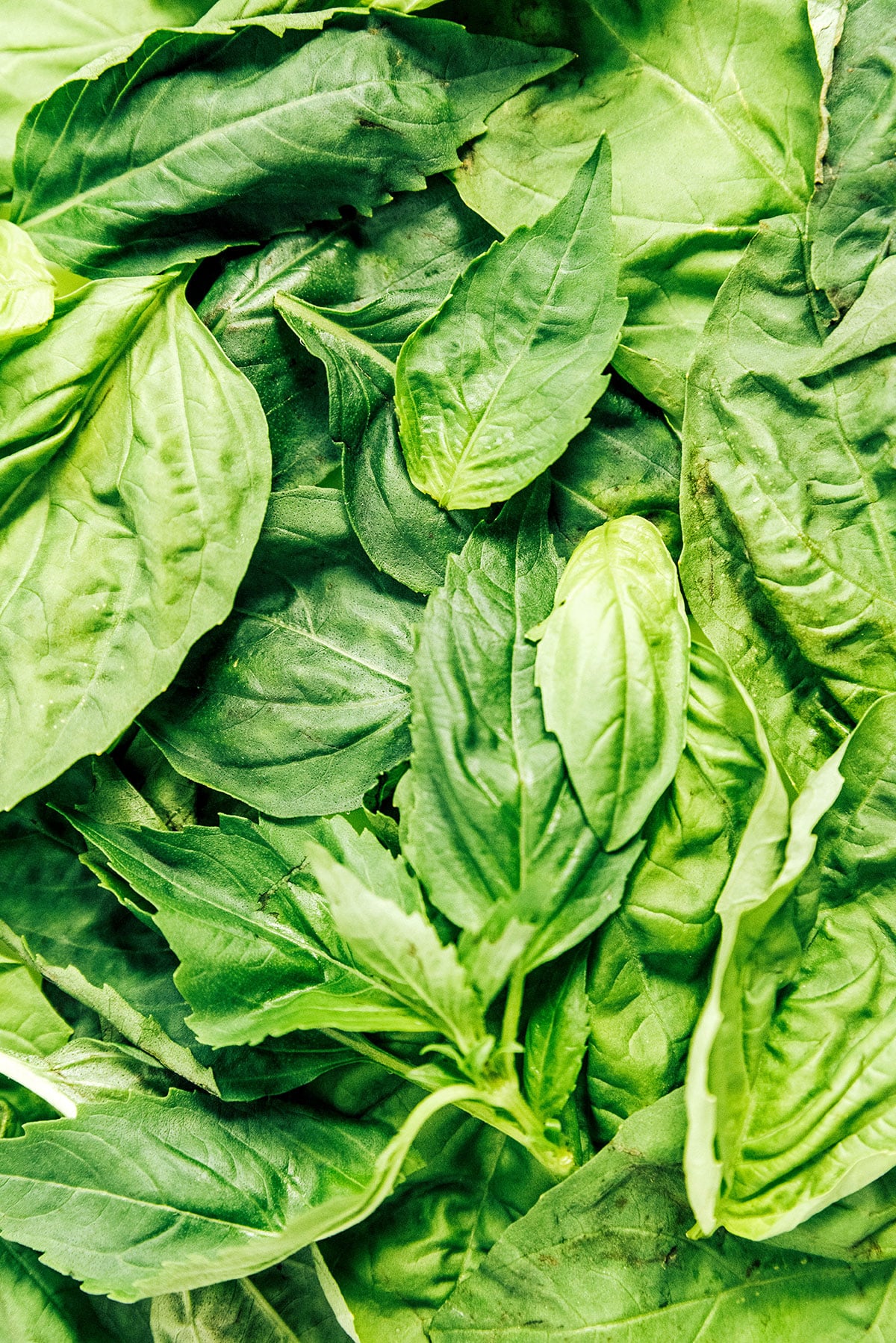
Seasonality: Basil is a fragrant herb that is widely used in a variety of cuisines around the world. When it comes to peak freshness and flavor, basil is best enjoyed during the summer months when it’s in season. In the United States, basil season typically runs from May to September, although it can vary depending on the region and weather conditions.
Selecting: Avoid basil with yellow or brown leaves, as this indicates that it’s past its prime. When harvesting basil, it’s best to pick the leaves in the morning when they’re at their freshest.
Storing: To store fresh basil, trim the stems and place the herb in a glass of water like a bouquet of flowers, and cover the leaves with a plastic bag before storing in the fridge. Alternatively, you can chop the leaves and freeze them in an airtight container for later use. So next time you’re looking to add some fresh flavor to your favorite dish, reach for some perfectly ripe basil for that extra touch of summer. Some great summer cooking uses include:
Bell Peppers
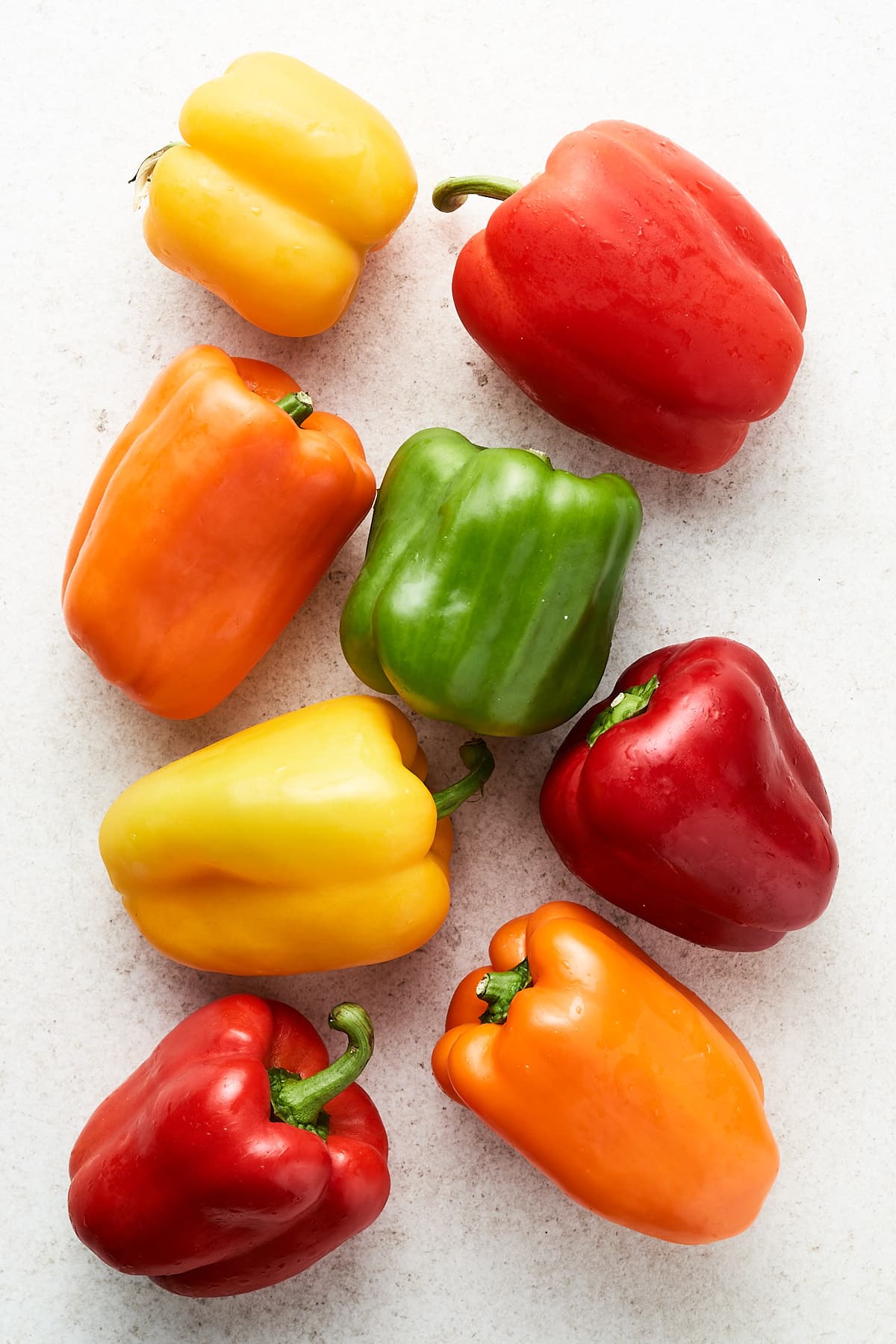
Seasonality: Bell peppers are a versatile and colorful addition to many dishes, whether they’re chopped up in a stir fry, stuffed with savory fillings, or simply enjoyed raw as a snack. In the United States, the peak season for bell peppers runs from July to September, with some regions seeing a longer season that extends into October.
Selecting: When selecting bell peppers, look for those that are firm and glossy, with no soft spots or blemishes. A ripe bell pepper should also feel heavy for its size, indicating that it’s full of moisture and flavor. Green bell peppers are unripe and have a slightly bitter taste, while yellow, orange, and red peppers are fully ripened and have a sweeter flavor.
Storing: Store bell peppers in the crisper drawer of your fridge for up to a week, but try to use them as soon as possible for the best taste and texture. Whether you prefer them raw or cooked, bell peppers are a delicious and healthy way to add some color and flavor to your meals. Try them in these Vegetable Vietnamese Spring Rolls or take along Mama’s Famous Bean Salad to your next cookout. It is always a hit at a BBQ.
Broccoli
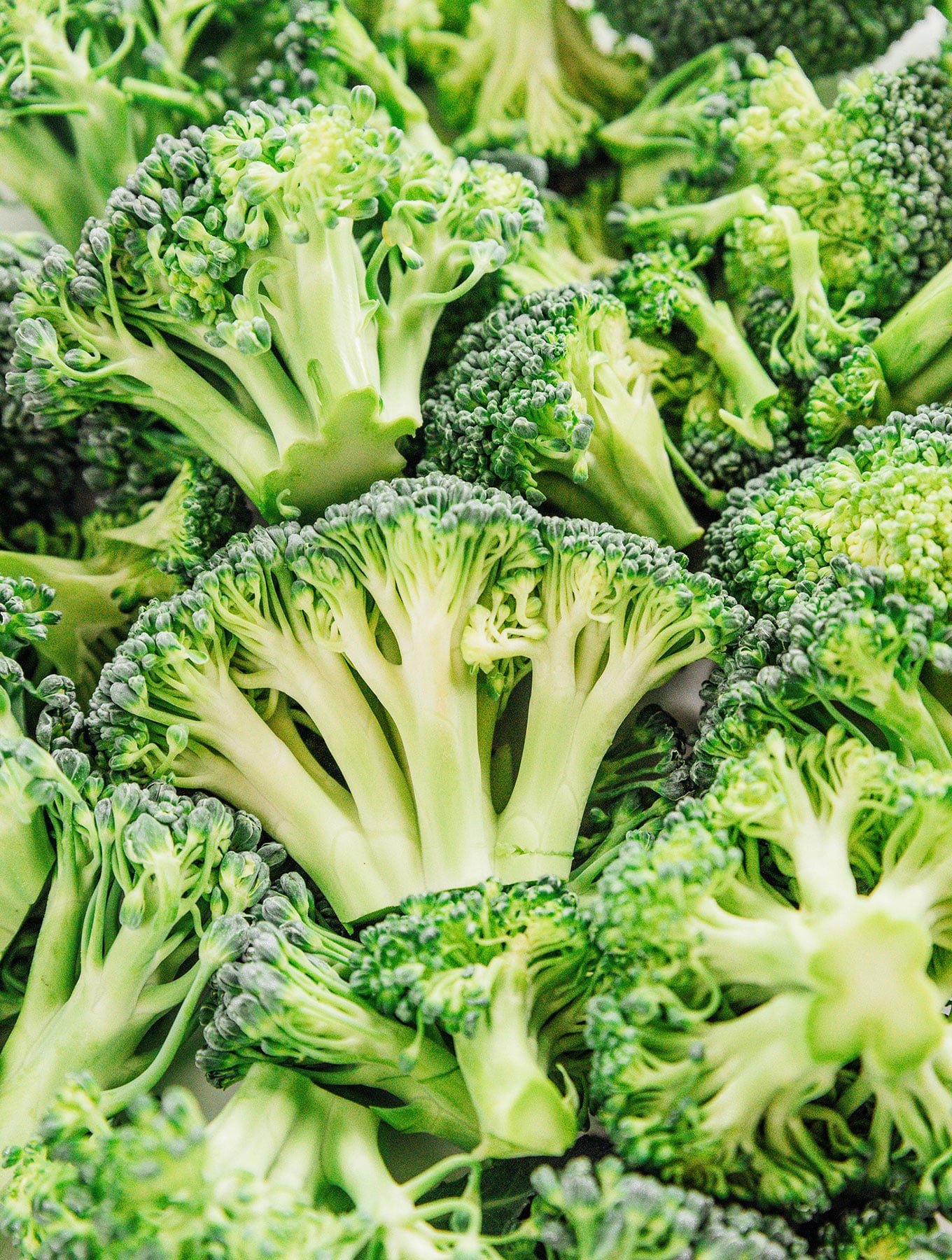
Seasonality: Broccoli is a nutritious veggie that is generally either a late summer into fall vegetable, or it is planted in the spring for early summer harvesting. Fortunately it is available in the grocery year round.
Selecting: Look for broccoli that has a deep green color and tightly packed florets, with no yellowing or wilting. To know if it’s good, check the stems for firmness and snap off a small piece to taste for freshness.
Storing: When storing fresh broccoli, keep it in a plastic bag or airtight container in the refrigerator for up to a week. To prepare broccoli, remove the tough stem and cut the florets into bite-sized pieces. Steam, roast, or sauté the broccoli to bring out its natural flavor and texture. Whether you’re adding it to stir-fries, salads, or pasta dishes, broccoli is a delicious and nutritious addition to any meal. Give these recipes a look, and you might just find your go to salad for cookouts.
Carrots
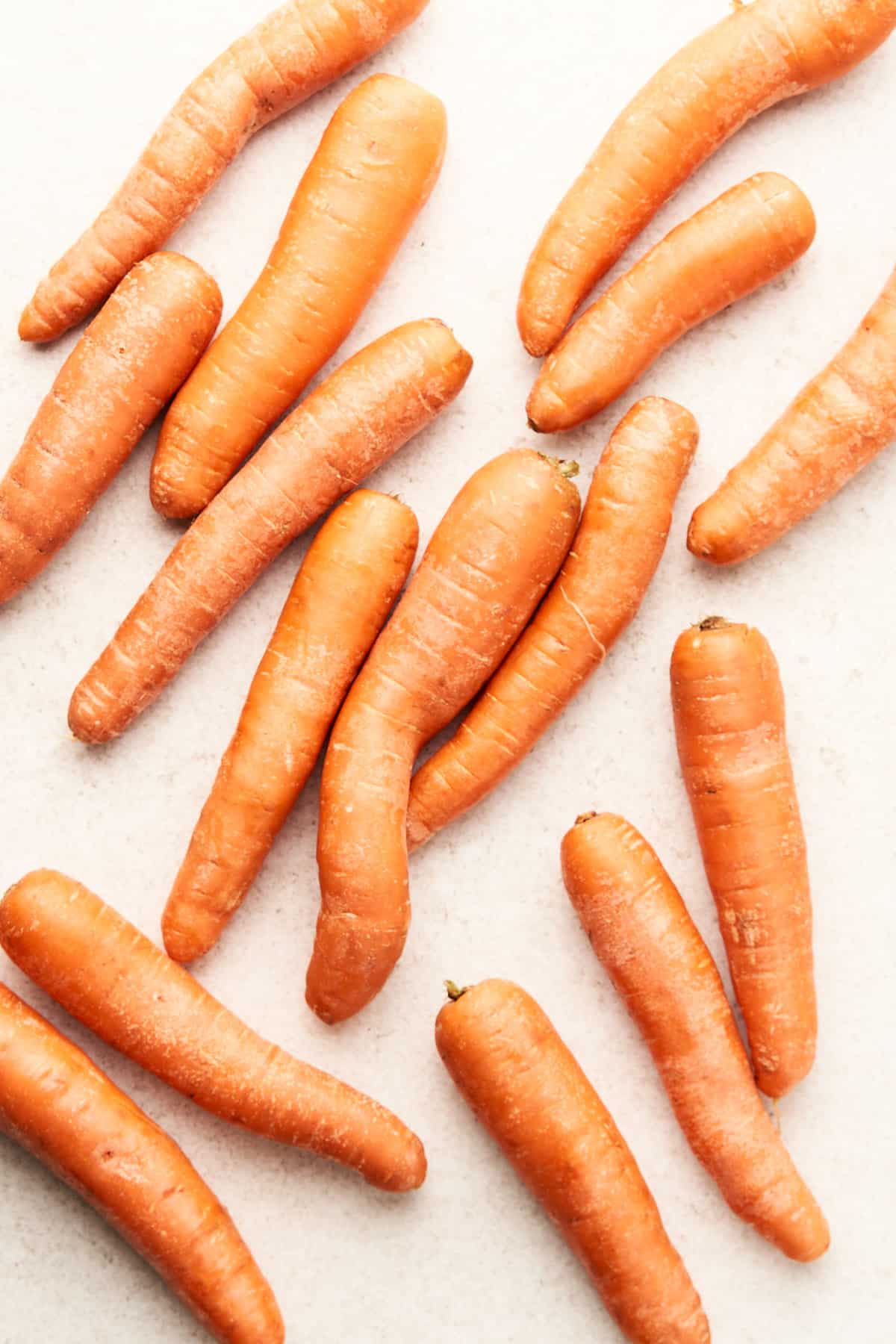
Seasonality: Carrots are a root vegetable that are rich in vitamins, fiber, and antioxidants. In the United States, the peak season for carrots runs from June to November, although they are typically available year-round due to storage techniques.
Selecting: When selecting fresh carrots, look for those that are firm and straight, with a bright orange color and smooth skin. Avoid carrots that are limp, cracked, or have soft spots, as these can be signs of spoilage. To know if your carrots are ripe, give them a gentle squeeze – they should be firm but not too hard.
Storing: When storing fresh carrots, remove the leafy green tops and place the roots in a plastic bag in the refrigerator for up to two weeks. You can also store carrots in a cool, dry place, like a root cellar or pantry, for longer periods of time. To prepare carrots, wash and peel them before slicing or chopping carrots into bite-sized pieces. You can enjoy them raw as a snack, roasted as a side dish, or used as a base for soups and stews. So next time you’re looking for a nutritious and tasty vegetable, reach for some perfectly ripe carrots.
Celery
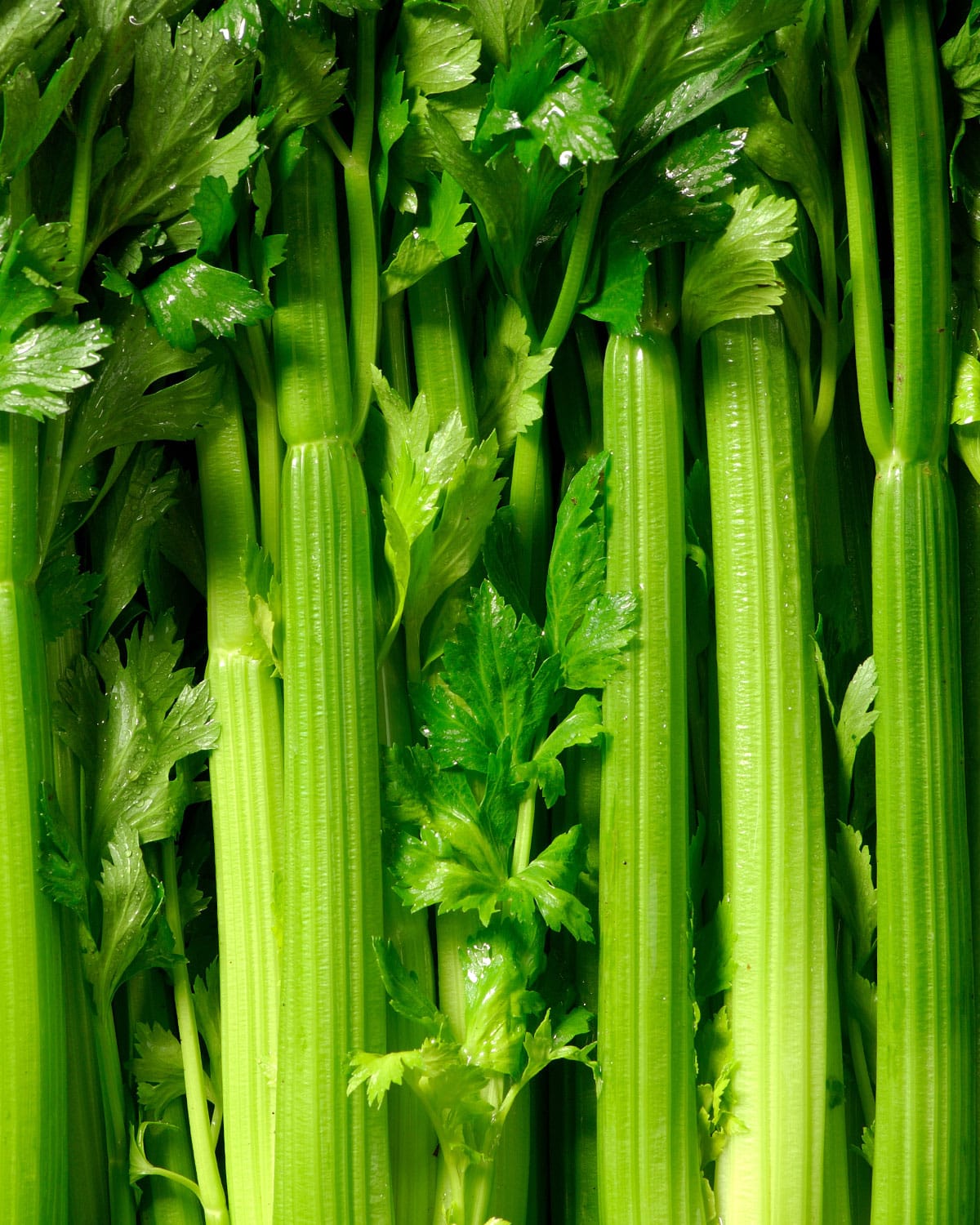
Seasonality: Celery is a crunchy and refreshing vegetable that’s often used as a base for soups, stews, and salads. In the United States, celery is at its peak freshness from August through October, although it’s widely available year-round (it is often considered a winter crop in the South and a summer crop in the North).
Selecting: When selecting fresh celery, look for those that have firm and tightly packed stalks, with no signs of wilting or discoloration. The leaves should also be green and fragrant. To know if your celery is ready, snap off a small piece of the stalk – it should be crisp and juicy.
Storing: When storing fresh celery, wrap it tightly in aluminum foil or plastic wrap and store it in the refrigerator for up to two weeks. To prepare celery, rinse the stalks under cold water and trim off the leafy tops and root end. You can then chop the stalks into bite-sized pieces and add them to your favorite dishes, or enjoy them raw with your favorite dips. With its crisp texture and refreshing flavor, celery is a versatile and healthy vegetable that’s perfect for any season.
Celery is the vegetable that is always the bride’s maid but never the bride. There just aren’t many recipes with celery as the main ingredient. It is, however, a great supporting character. We like it in this Sunshine Salad or mixed into Chickpea Tuna Salad.
Corn
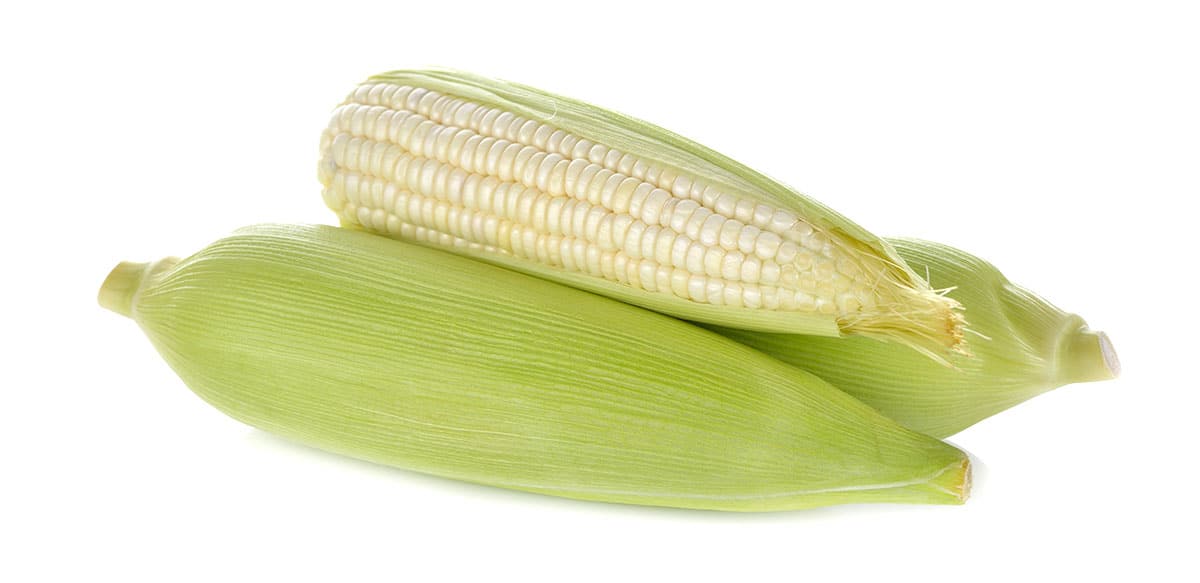
Seasonality: Corn is a sweet and delicious vegetable that’s a staple of many summer meals. In the United States, the peak season for fresh corn runs from May to September, although it can often be found year-round in grocery stores due to advances in storage and transportation.
Selecting: When selecting fresh corn, look for ears that have bright green husks that fit snugly around the kernels. The silks at the top of the ear should be brown and slightly sticky, but not dried out. To know if your corn is ready to eat, peel back a small portion of the husk and examine the kernels – they should be plump and tightly packed together. You can also press your fingernail into a kernel – if a milky liquid comes out, the corn is ripe and ready to eat.
Storing: When storing fresh corn, keep it in the refrigerator with the husks intact for up to five days. To prepare corn, remove the husks and silks and boil or grill the ears until tender. Serve with butter and salt, or try seasoning it with your favorite herbs and spices. With its sweet and versatile flavor, fresh corn is a delicious addition to any summer meal.
Our favorite summer use of fresh corn is in this Zucchini Corn Salad, which combines grilled corn, grilled zucchini, and feta. Make up a big batch and take it to your next cookout. We guarantee you won’t bring home leftovers. Second up is Mexican Street Corn Salad which is probably just slightly easier to throw together.
Cucumbers
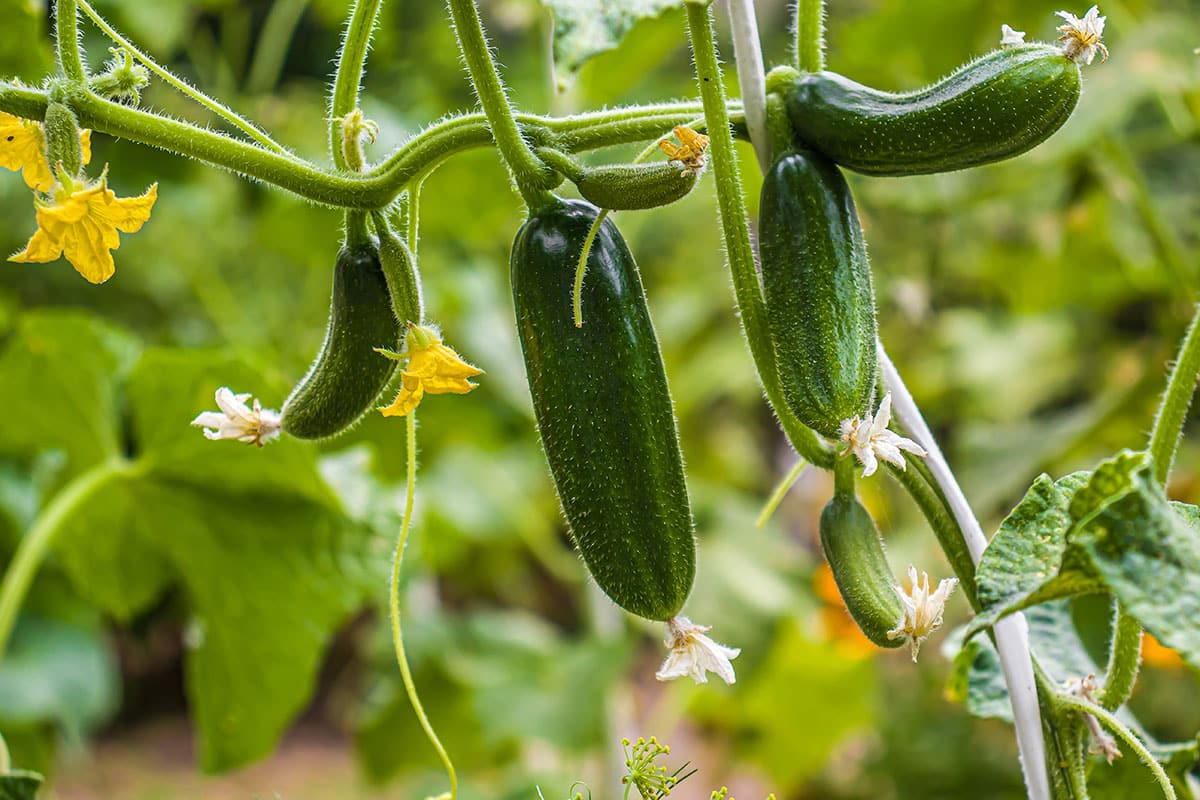
Seasonality: Cucumbers are a healthy, refreshing, and versatile vegetable that can be enjoyed raw or cooked in a variety of dishes. In the United States, the peak season for fresh cucumbers runs from June through August, although they can often be found year-round in grocery stores.
Selecting: When selecting fresh cucumbers, look for those that are firm, smooth-skinned, and brightly colored. The skin should be free of blemishes, wrinkles, or soft spots. To know if your cucumber is ripe, give it a gentle squeeze – it should be firm. You can also try tasting a small piece of the cucumber – if it tastes bitter, it may be overripe.
Storing: When storing fresh cucumbers, keep them in the refrigerator for up to a week. To prepare cucumbers, rinse them under cold water and slice them into rounds or spears. You can enjoy them raw in salads or sandwiches, or pickle them for a tangy and flavorful snack. With their crisp texture and refreshing taste, cucumbers are a healthy and delicious addition to any summer meal.
Tzatziki Cucumber Salad is a refreshing add to any cookout, and after your heat of the day workout try a Tropical Green Cucumber Smoothie.
Eggplant
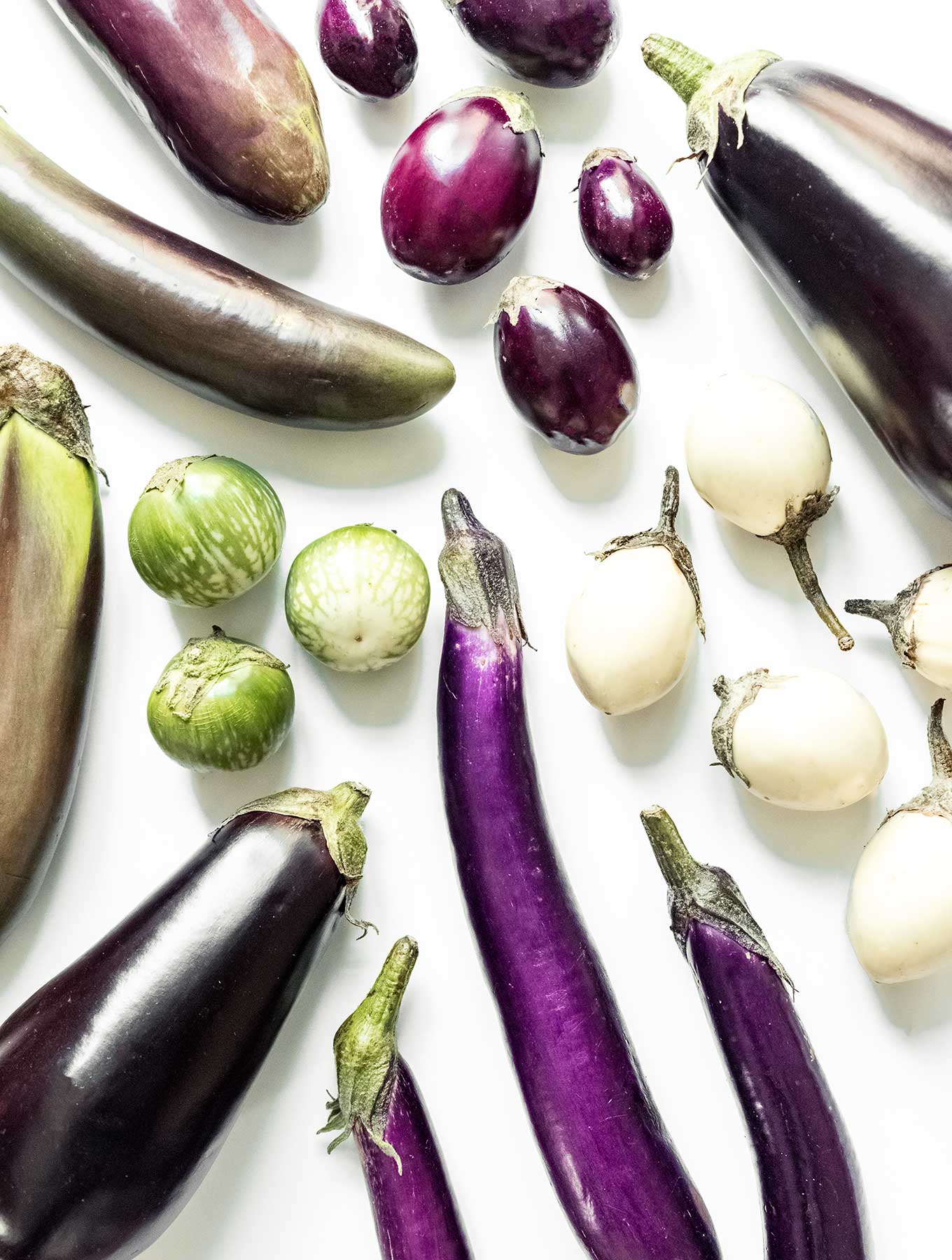
Seasonality: Eggplant is a healthy, versatile, and flavorful vegetable that’s often used in Mediterranean and Middle Eastern cuisine. In the United States, the peak season for fresh eggplant runs from July through October, although it can often be found year-round in grocery stores.
Selecting: When selecting fresh eggplant, look for those that have smooth, shiny skin with no blemishes or soft spots. The stem should also be bright green and firm. To know if your eggplant is ripe, press your finger gently against the skin – it should spring back slightly when pressed. You can also cut the eggplant open – the flesh should be white and tender with small, soft seeds.
Storing: When storing fresh eggplant, keep it in the refrigerator for up to five days. To prepare eggplant, rinse it under cold water and slice it into rounds or cubes. You can grill, roast, or sauté eggplant for a variety of dishes, such as baba ganoush, ratatouille, or eggplant lasagna. With its meaty texture and rich flavor, eggplant is a delicious and healthy vegetable that’s perfect for any season.
Snap Peas
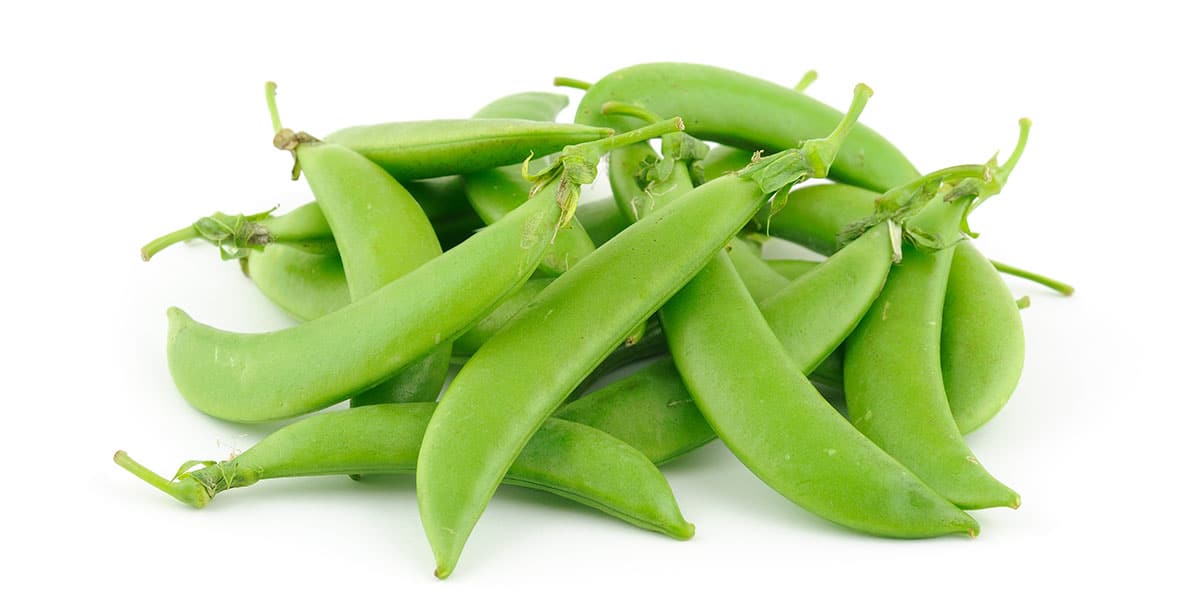
Seasonality: Snap peas are a crisp and sweet vegetable that can be enjoyed raw or cooked in a variety of dishes. In the United States, the peak season for fresh snap peas runs from April through June, although they can often be found year-round in grocery stores.
Selecting: When selecting fresh snap peas, look for those that are bright green, plump, and free of blemishes or spots. The pods should snap easily when bent, and the peas inside should be small and tender. To know if your snap peas are ripe, give them a gentle squeeze – they should feel firm and not too soft. You can also try tasting a small piece of the snap pea – it should be sweet and crisp.
Storing: When storing fresh snap peas, keep them in the refrigerator for up to five days. To prepare snap peas, rinse them under cold water and remove the stem and string from each end. You can enjoy them raw in salads or as a snack, or sauté them with garlic and olive oil for a tasty side dish. With their fresh and crunchy texture, snap peas are a healthy and delicious addition to any summer meal. Try them in this Vegetarian Coconut Curry.
Green Beans
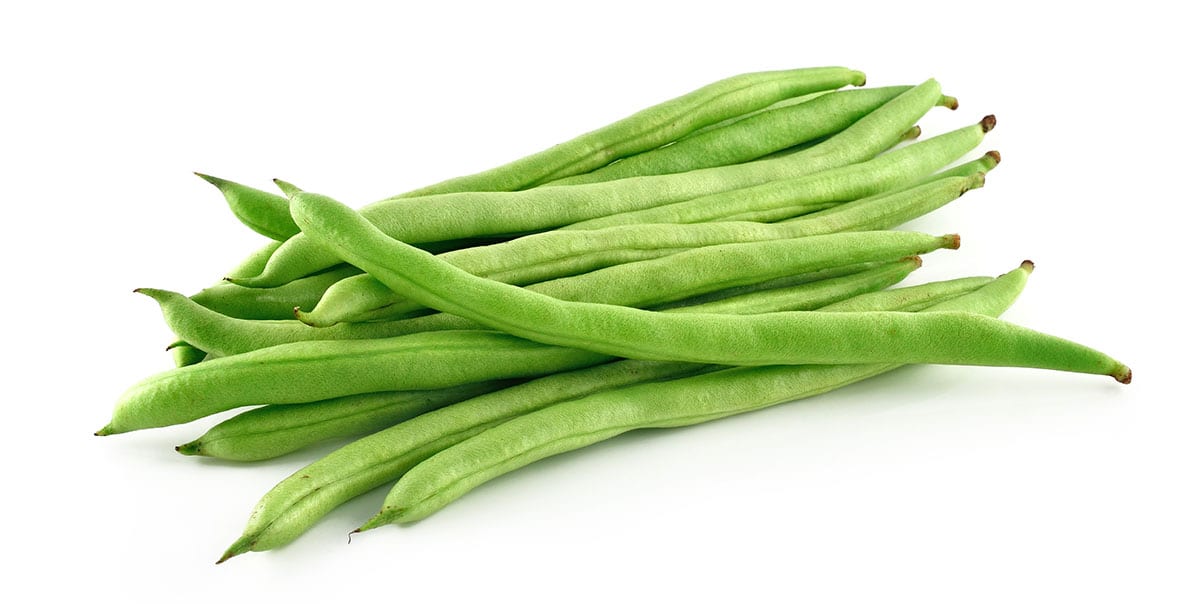
Seasonality: Green beans are a versatile and nutritious vegetable that can be enjoyed cooked or raw. In the United States, the peak season for fresh green beans runs from May through September, although they can often be found year-round in grocery stores.
Selecting: When selecting fresh green beans, look for those that are bright green, plump, and free of blemishes or spots. The pods should snap easily when bent, and the beans inside should be small and tender. To know if your green beans are ripe, give them a gentle squeeze – they should feel firm and not too soft. You can also try tasting a small piece of the green bean – it should be crisp and sweet.
Storing: When storing fresh green beans, keep them in the refrigerator for up to five days. To prepare green beans, rinse them under cold water and remove the stem and tail from each end. You can steam, sauté, or roast green beans for a variety of dishes, such as stir-fries, salads, or casseroles. With their fresh and vibrant flavor, green beans are a healthy and delicious addition to any summer meal.
Hot Peppers
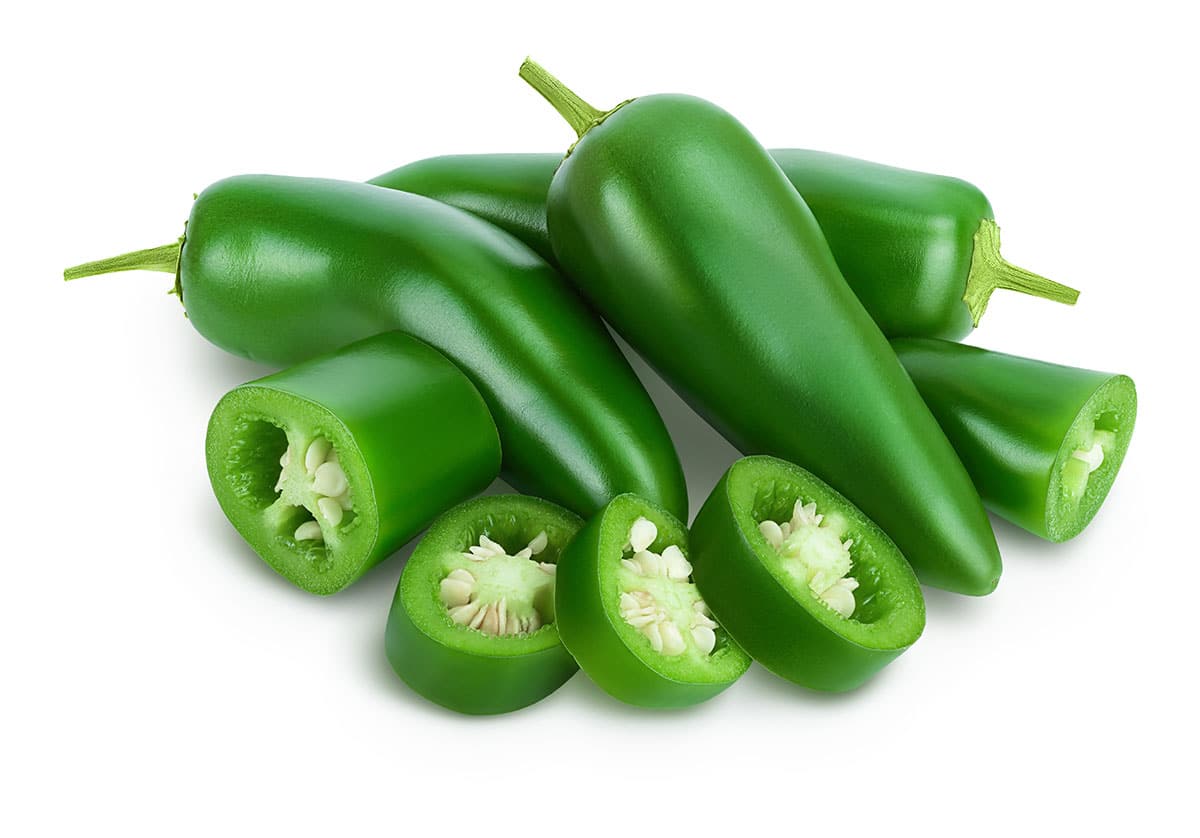
Seasonality: Peppers come in a variety of colors, shapes, and sizes, and can add flavor and color to many summer dishes. In the United States, peak season for fresh peppers typically runs from July through September, although they can often be found year-round in grocery stores.
Selecting: When selecting fresh peppers, look for those that are brightly colored, firm, and free of blemishes or wrinkles. The skin should be smooth and shiny. To know if your pepper is ripe, give it a gentle squeeze – it should feel firm and not too soft. Depending on the variety, ripe peppers may also begin to develop a slightly sweet fragrance.
Storing: When storing fresh peppers, keep them in the refrigerator for up to one week. To prepare peppers, rinse them under cold water, slice off the stem and remove the seeds and white membrane from the inside (how to cut peppers here). Peppers can be eaten raw in salads, roasted or grilled for added smoky flavor, or used as a base for sauces and dips. With their versatility and vibrant taste, peppers are a flavorful addition to any summer meal.
Mushrooms
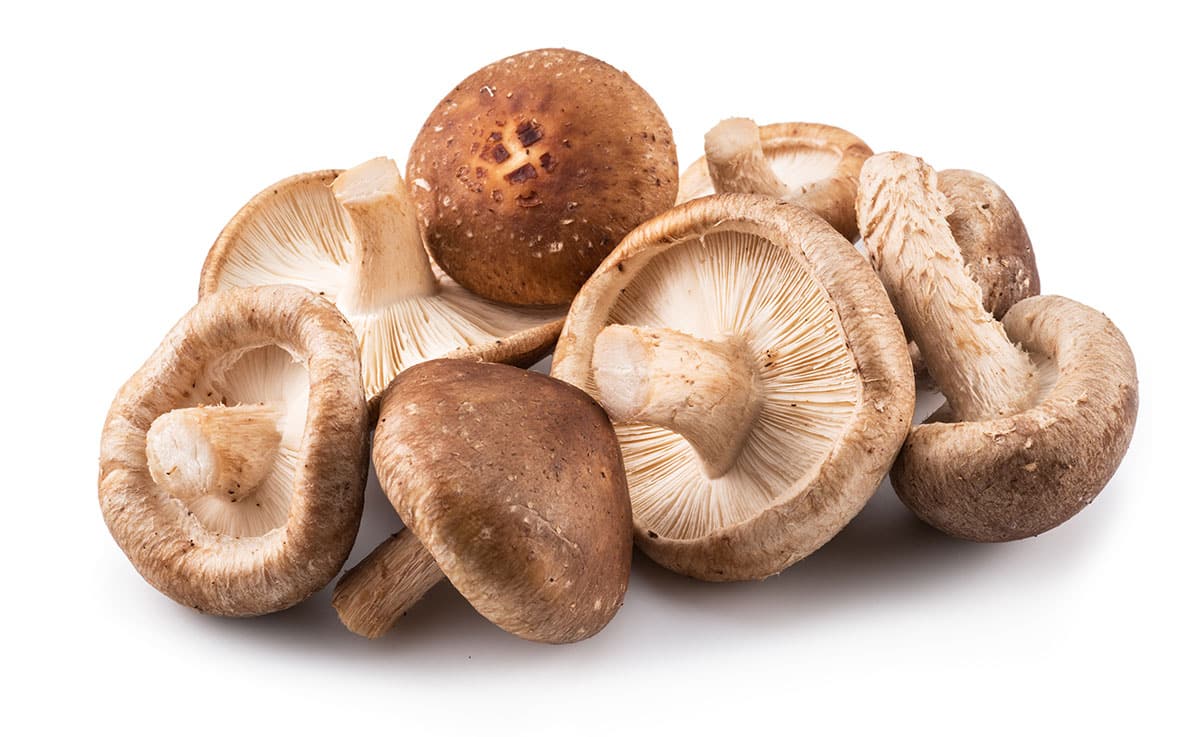
Seasonality: Mushrooms are a delicious and nutrient-rich ingredient that can be used in a wide range of mushroom recipes (I mean, there’s just so many types of mushrooms to choose from!). In the United States, peak season for many types of mushrooms runs from late summer through fall, although some varieties are available year-round.
Selecting: When selecting fresh mushrooms, look for those that are firm, with a dry surface and a pleasant earthy aroma. The caps should be intact and not show any signs of damage or discoloration. To know if your mushroom is ripe, gently press on the cap – it should feel firm and not give easily. It’s also important to note that mushrooms do not ripen like many other fruits and vegetables, and should be consumed while they are fresh.
Storing: When storing fresh mushrooms, keep them in a paper bag in the refrigerator for up to five days. To prepare mushrooms, rinse them under cold water and slice or chop the mushrooms as desired. Mushrooms can be sautéed, roasted, grilled, or used as a meat substitute in vegetarian dishes. With their rich flavor and versatility, mushrooms are a delicious addition to any summer meal, like these Portobello Mushroom Burgers.
New Potatoes
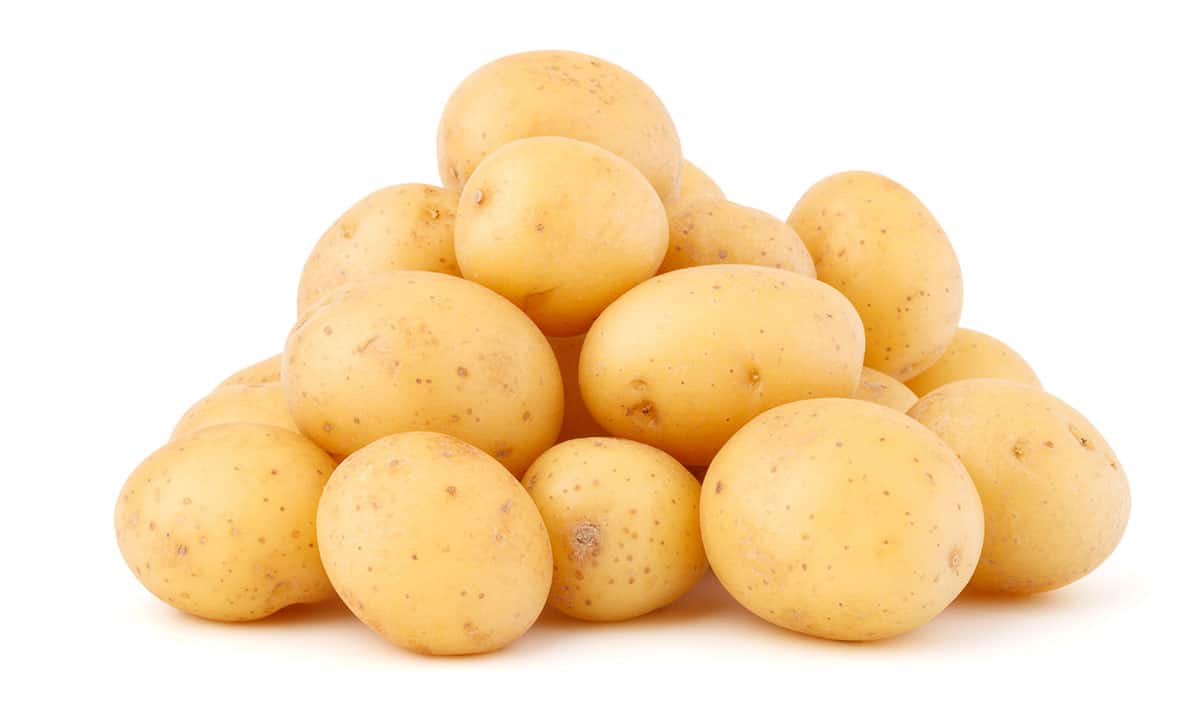
Seasonality: New Potatoes are not a distinct potato variety, but a term used to refer to potatoes harvested early in the season. New potatoes have very thin skins and a moist waxy flesh. So in the spring and early summer, buy fresh new potatoes and use them as you would in any of your favorite recipes that call for a waxy potato like roasting in the skin, boiling, steaming, or in salads.
At your next cookout, If you, or any of your guests don’t eat beef burgers, mix up a quick batch of these well tested Mashed Potato Black Bean Burgers.
Okra
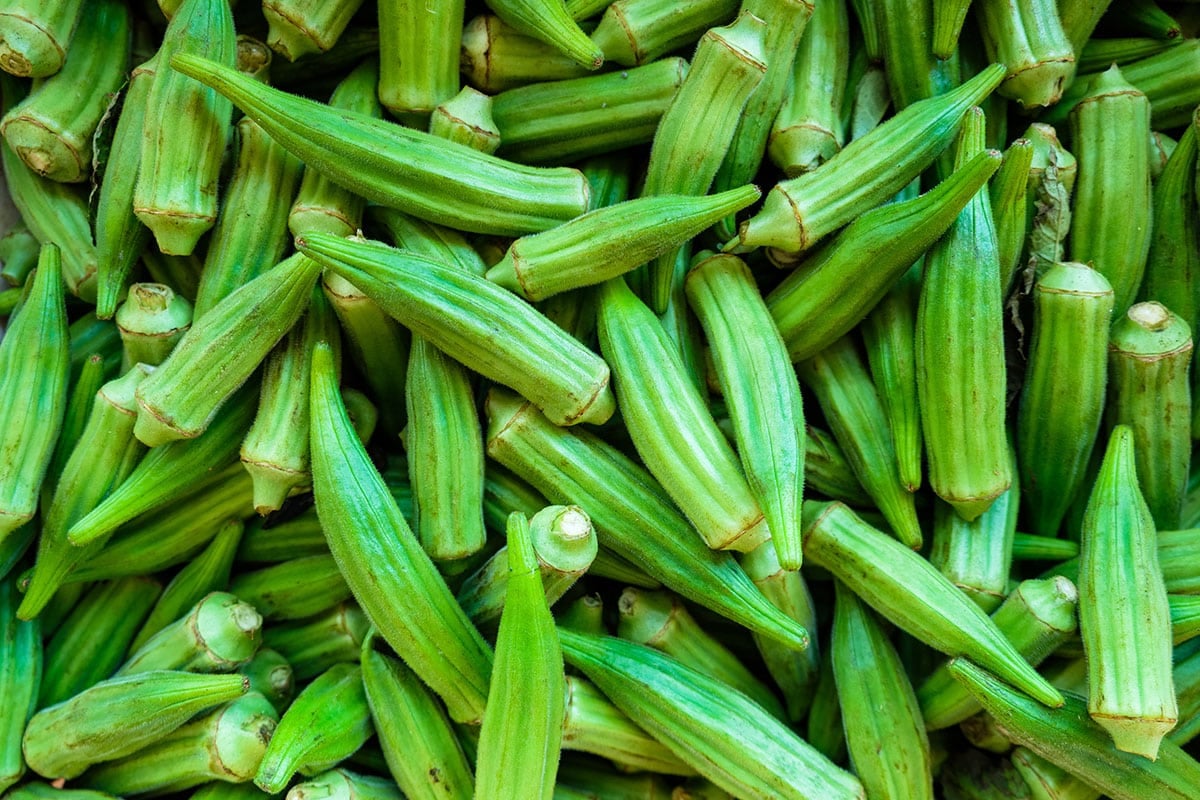
Seasonality: Okra is a unique and flavorful vegetable that is popular in Southern and Caribbean cuisines. In the United States, peak season for fresh okra runs from late spring through summer.
Selecting: When selecting fresh okra, look for those that are firm and brightly colored, with no signs of blemishes or discoloration. The pods should be tender and snap easily when bent. To know if your okra is ripe, look for small pods that are less than 4 inches long – larger pods can be tough and fibrous.
Storing: When storing fresh okra, keep them in a paper bag in the refrigerator for up to four days. To prepare okra, rinse them under cold water and slice off the stem and tip. Okra can be boiled, fried, roasted, or grilled, and is often used as a thickener in soups and stews. With its distinctive texture and flavor, okra is a flavorful addition to any summer meal.
Radish
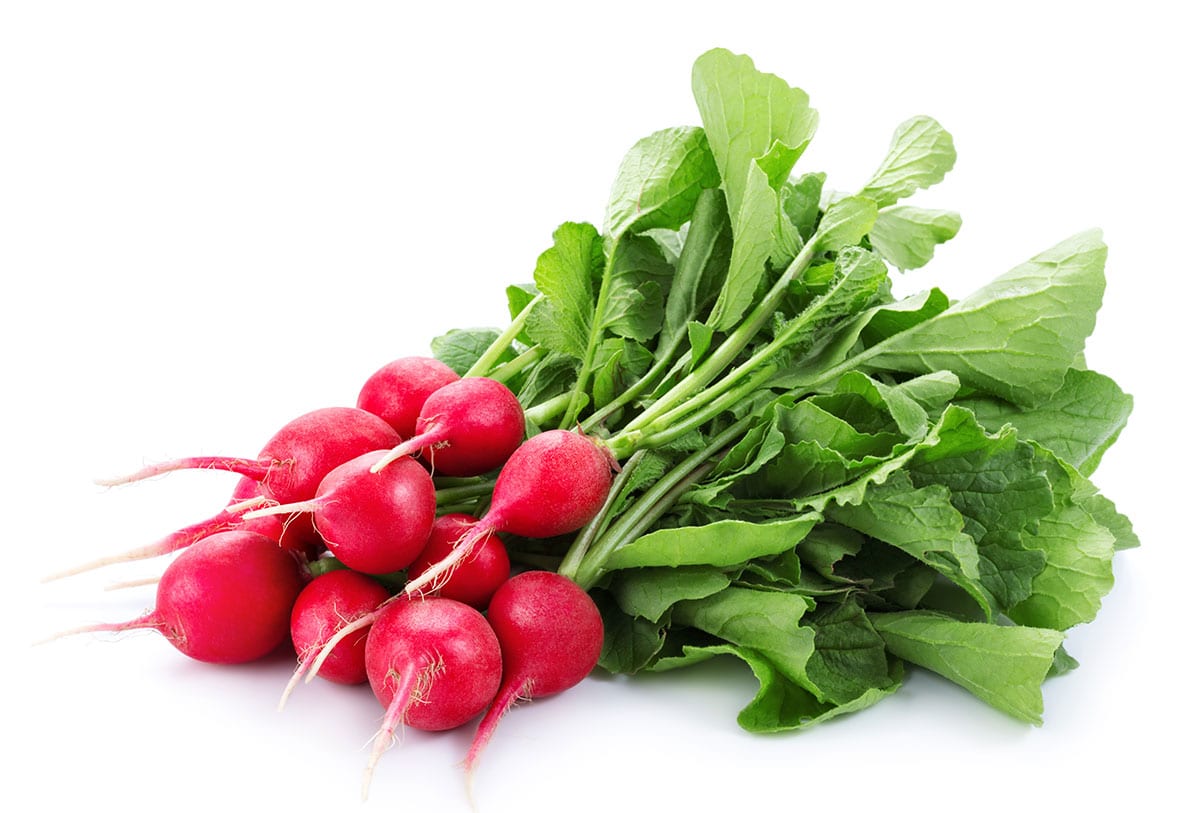
Seasonality: Radishes are a crisp and refreshing vegetable that add a spicy kick to salads and sandwiches. In the United States, peak season for fresh radishes runs from early spring through summer.
Selecting: When selecting fresh radishes, look for those that are firm and brightly colored, with no signs of blemishes or discoloration. The bulbs should be uniform in size and shape, and the greens should be bright and fresh. To know if your radish is ripe, gently press on the bulb – it should feel firm and not give easily.
Storing: When storing fresh radishes, remove the greens and store the bulbs in a plastic bag in the refrigerator for up to two weeks. To prepare radishes, rinse them under cold water and slice off the stem and tip. Radishes can be sliced or grated and added to salads or sandwiches, or pickled for a tangy snack. With their crisp texture and spicy flavor, radishes are a delicious addition to any summer meal, like this radish salad or these vegan spring rolls!
Rhubarb
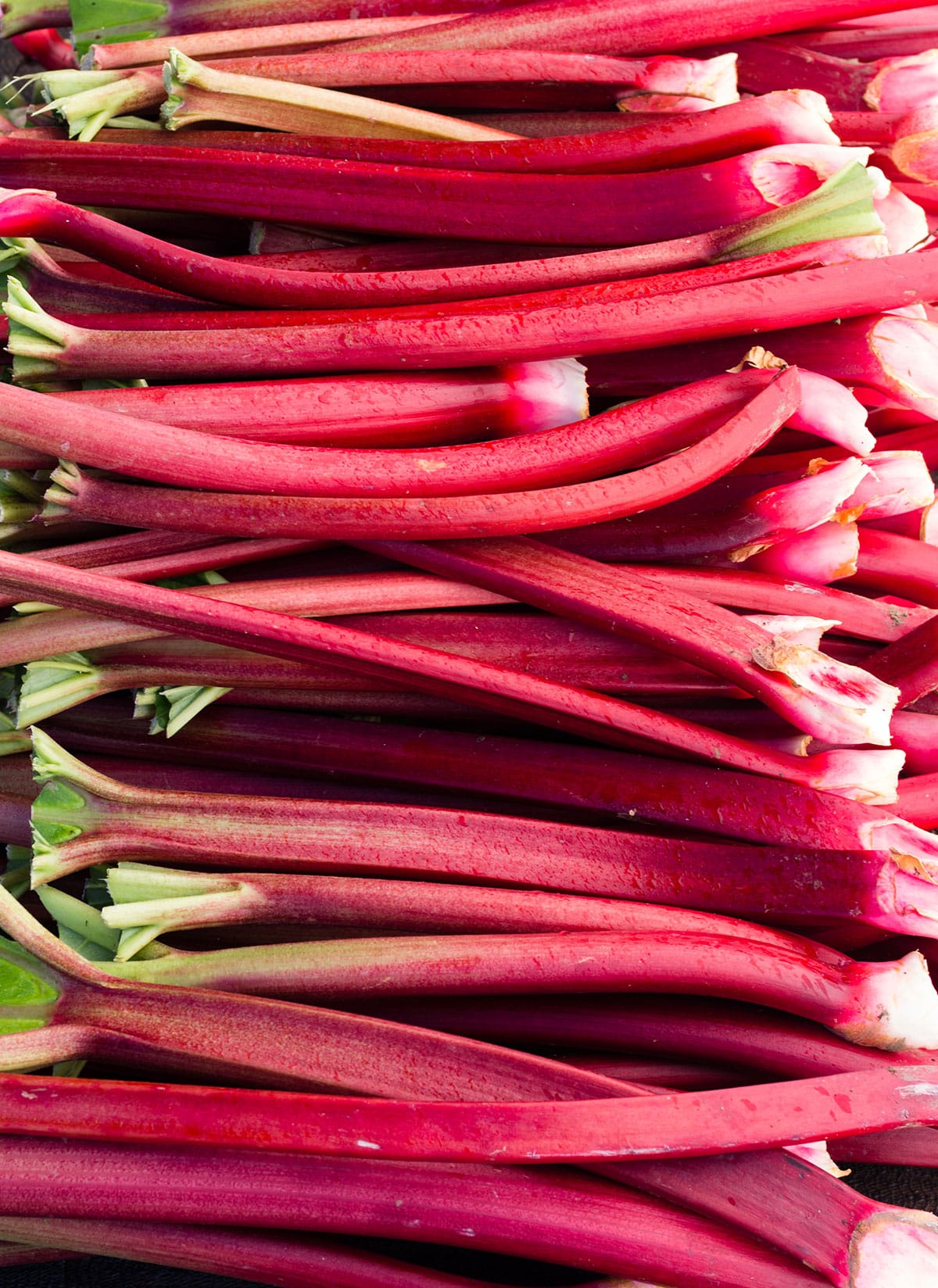
Seasonality: Rhubarb is a tart and tangy vegetable that is often used in sweet desserts like pies, tarts, and compotes. In the United States, peak season for fresh rhubarb runs from late spring through early summer.
Selecting: When selecting fresh rhubarb, look for those that are firm and brightly colored, with no signs of blemishes or discoloration. The stalks should be crisp and not limp. To know if your rhubarb is ripe, gently pull on a stalk – it should come away easily from the plant.
Storing: When storing fresh rhubarb, wrap the stalks in a damp paper towel and store in a plastic bag in the refrigerator for up to a week. To prepare rhubarb, rinse the stalks under cold water and trim off the ends. Rhubarb is often cooked with sugar to help balance its tartness, and can be used in a variety of sweet and savory dishes. With its unique flavor and bright color, rhubarb is a delicious and versatile vegetable that is perfect for spring and early summer cooking.
Tomatillos

The tomatillo is also known as the Mexican husk tomato because it has an outer husk-like skin that easily peels off. They aren’t, however, tomatoes. They are related, but are not as sweet as tomatoes and more acidic.
Tomatillos have grown in Mexico since well before Columbus introduced the Western world to all the great vegetables of the “New World”. A tomatillo fossil believed to be 52 million years old was found in Argentina, so this is probably the oldest veggie we have cooked with at Live Eat Learn.
Seasonality: Tomatillos are a small, round fruit with a papery husk that is often used in Mexican cuisine to make salsa verde and other sauces. In the United States, peak season for fresh tomatillos runs from late summer through early fall.
Selecting: When selecting fresh tomatillos, look for those that are firm and evenly colored, with no signs of blemishes or soft spots. The husk should be intact and dry, and the fruit inside should feel firm to the touch. To know if your tomatillo is ripe, peel back a small piece of the husk and check that the fruit is a bright green color.
Storing: When storing fresh tomatillos, remove the husks and store in a paper bag in the refrigerator for up to two weeks. To prepare tomatillos, rinse them under cold water and remove the stem. They can be roasted, boiled, or blended raw to make a variety of sauces and salsas. With their tangy flavor and unique texture, tomatillos are a delicious and versatile ingredient that is perfect for late summer and early fall cooking. Give them a try in this Vegan Pozole Verde!
Tomatoes
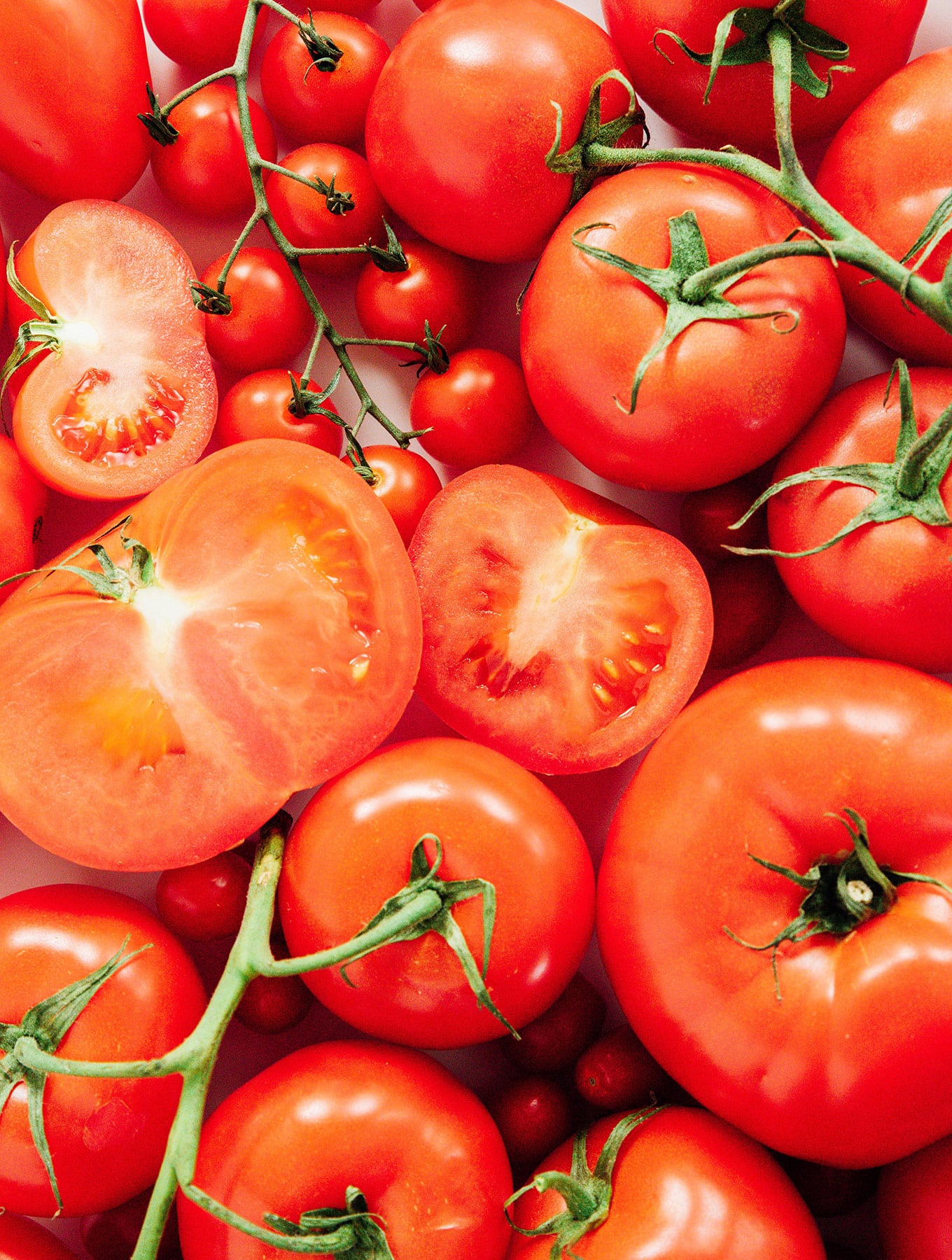
Tomatoes are the ultimate DIY vegetable as they are so easy to grow at home. While their humble beginning was as a wild plant in the Andes Mountains, they are today one of the world’s most favorite foods peaking in the summer here in the USA.
Seasonality: Tomatoes are one of the most popular and versatile fruits (although they are often used like vegetables) in the world, and they come in a wide variety of shapes, sizes, and colors. In the United States, peak season for fresh, vine-ripened tomatoes runs from late summer through early fall, although they can be found year-round in many grocery stores.
Selecting: When selecting fresh tomatoes, look for those that are firm, smooth, and brightly colored, with no signs of blemishes or bruises. Tomatoes should feel heavy for their size and give slightly when gently squeezed. They should also have a pleasant, slightly sweet smell. Tomatoes that are too firm, too soft, or have a dull or mottled appearance may not be at peak freshness.
Storing: Tomatoes can be stored at room temperature until ripe, then moved to the refrigerator to extend their shelf life. With their juicy, acidic flavor and versatile use in roasted tomatoes, marinara sauces, and fresh tomato gazpacho, fresh, ripe tomatoes are a true taste of summer.
Yellow Squash
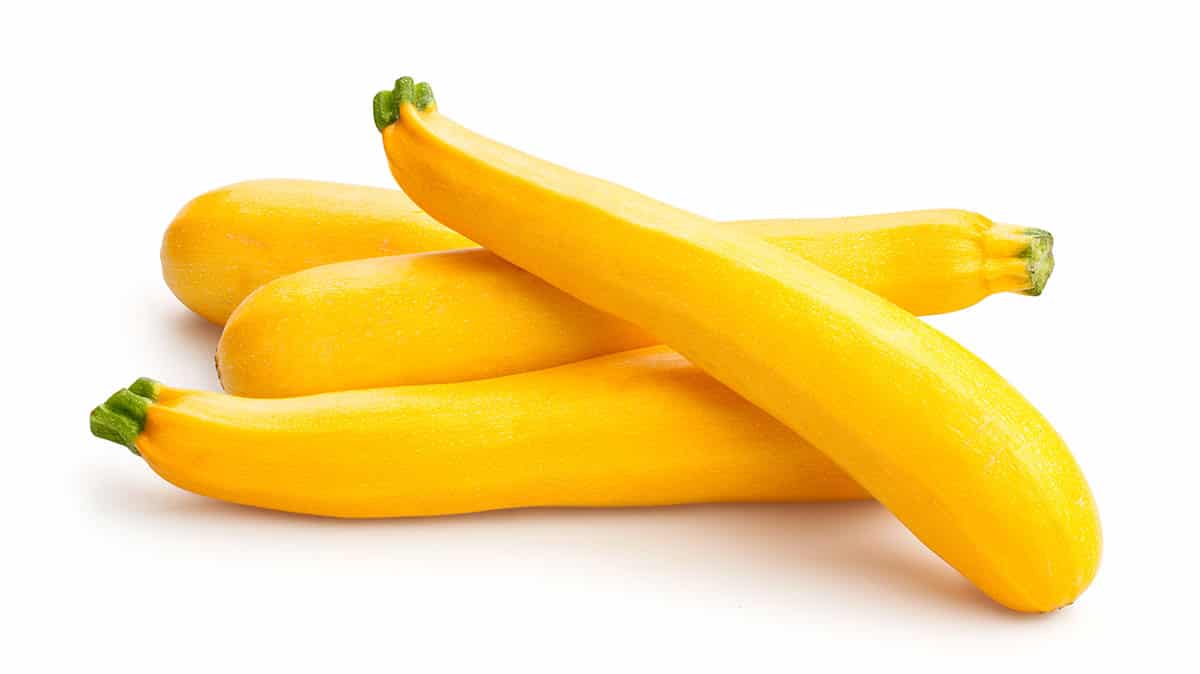
Seasonality: Summer squash, also known as yellow squash, is a versatile and delicious vegetable that is at its peak freshness during the summer months. In the United States, peak season for summer squash runs from late spring through early fall, although it can be found year-round in many grocery stores.
Selecting: When selecting fresh summer squash, look for those that are firm, with smooth, unblemished skin and bright yellow color. The smaller the squash, the more tender and flavorful it will be. Summer squash should be heavy for its size and should not have any soft spots or visible bruises. Avoid selecting squash that are too large, as they can be tough and bitter.
Storing: Summer squash can be stored in the refrigerator for up to a week. With its sweet, nutty flavor and tender texture, summer squash is a delicious addition to soups, salads, stir-fries, and more.
Zucchini
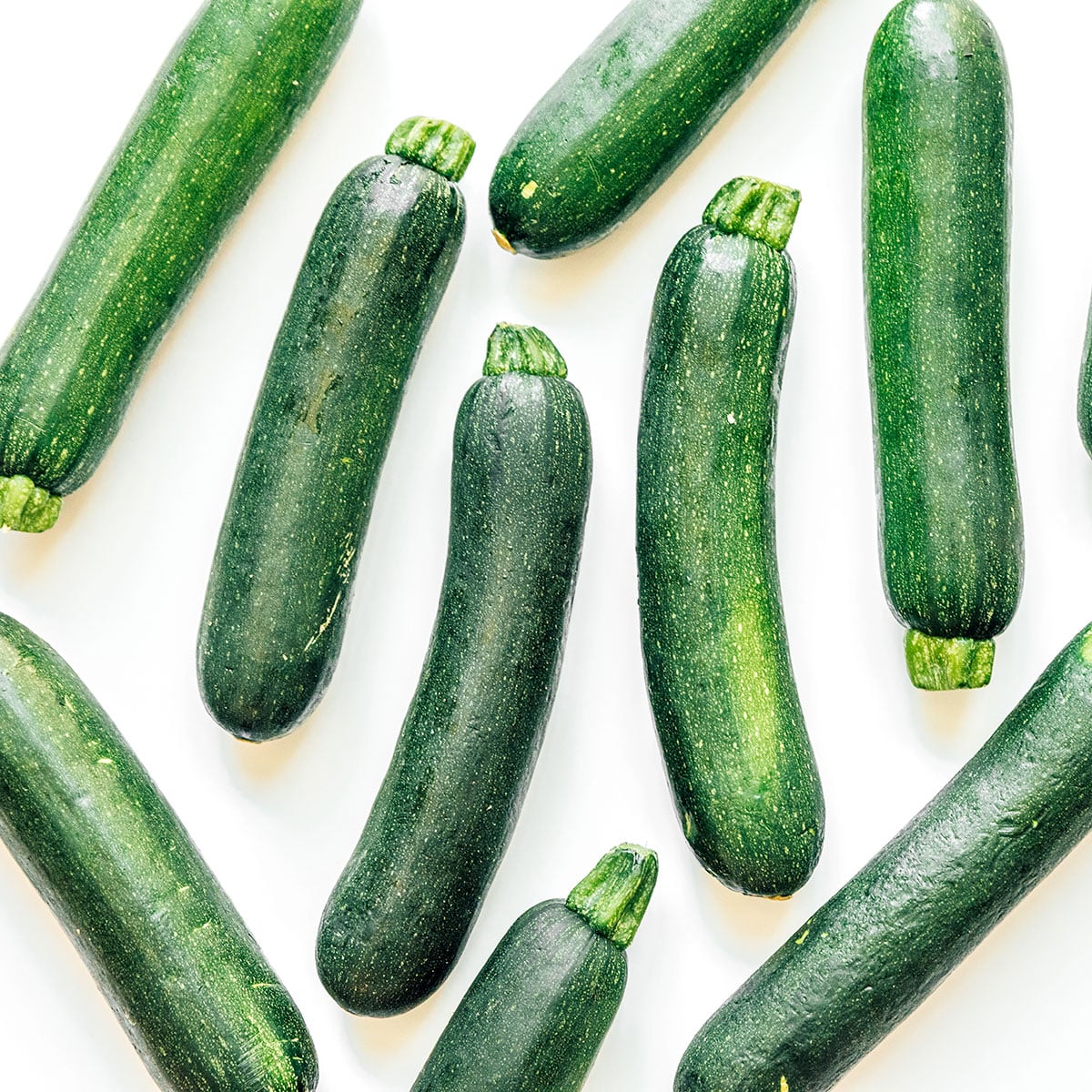
Seasonality: Zucchini is a popular summer vegetable that is at its peak freshness during the summer months. The peak season for zucchini runs from late spring through early fall in the United States, although it can be found year-round in some grocery stores.
Selecting: When selecting fresh zucchini, look for those that are firm, with smooth, unblemished skin and bright green color. The smaller the zucchini, the more tender and flavorful it will be. Zucchini should be heavy for its size and should not have any soft spots or visible bruises. Avoid selecting zucchini that are too large, as they can be tough and bitter.
Storing: Zucchini can be stored in the refrigerator for up to a week. With its mild flavor and versatile texture, zucchini is a delicious addition to campfire veggies, zucchini noodles, and even baked goods like zucchini crisp.
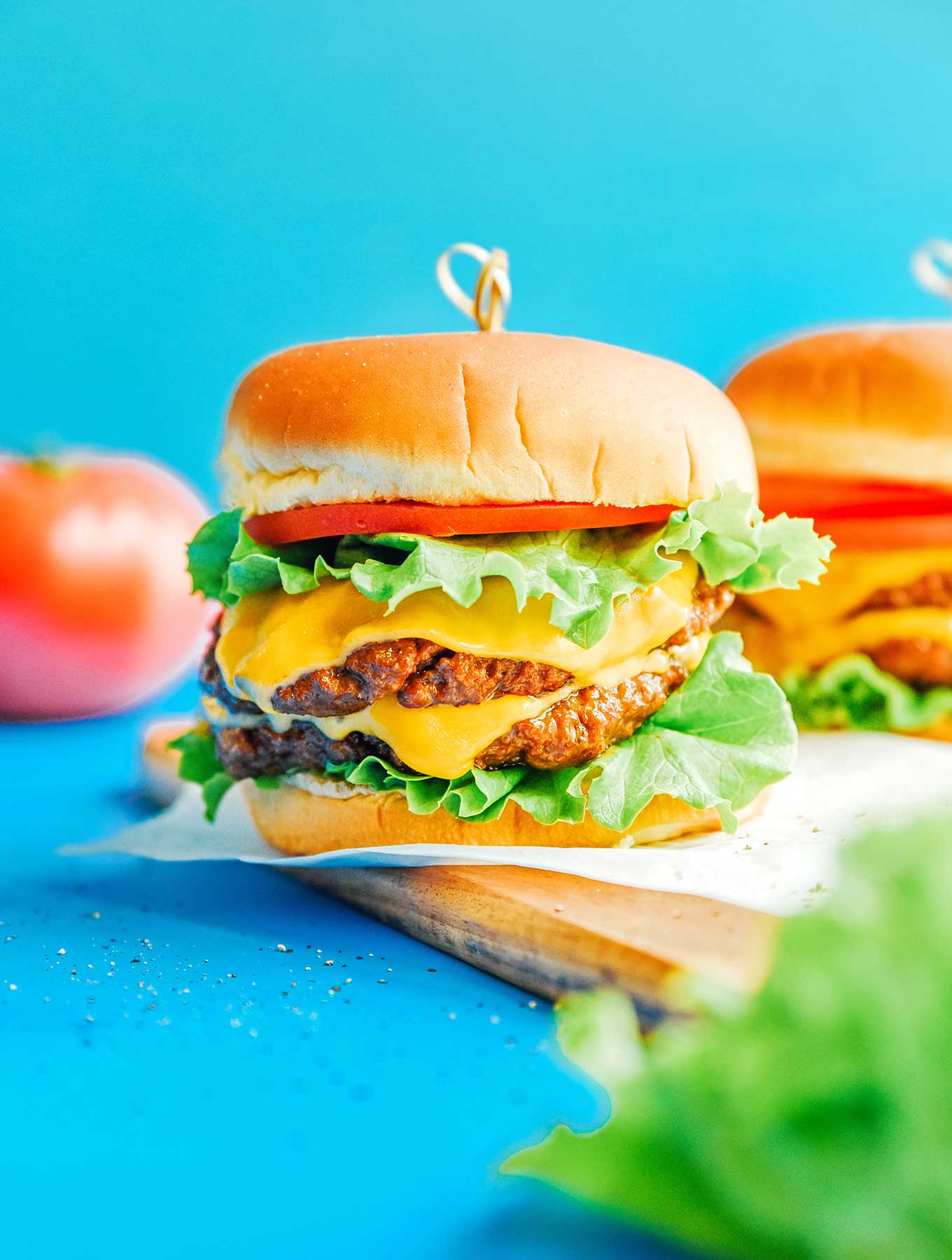
We hope you found something here you can use this summer! For more ideas check out our 15 Vegetarian Father’s Day Recipes, 25 Vegetarian 4th of July Recipes, or 17 Vegetarian Summer Recipes. Happy Cooking!
Trivia Answer
The first day of summer in the Northern Hemisphere is June 21st!
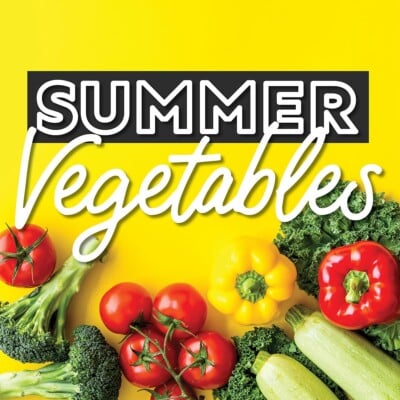
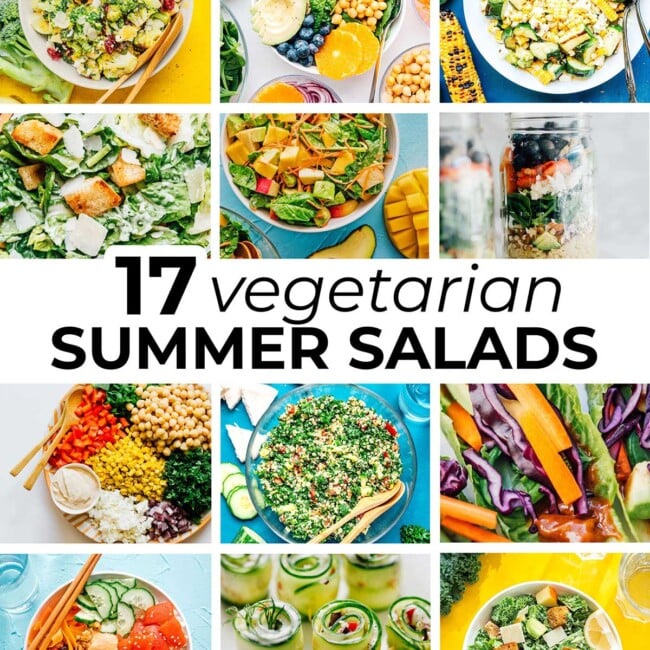
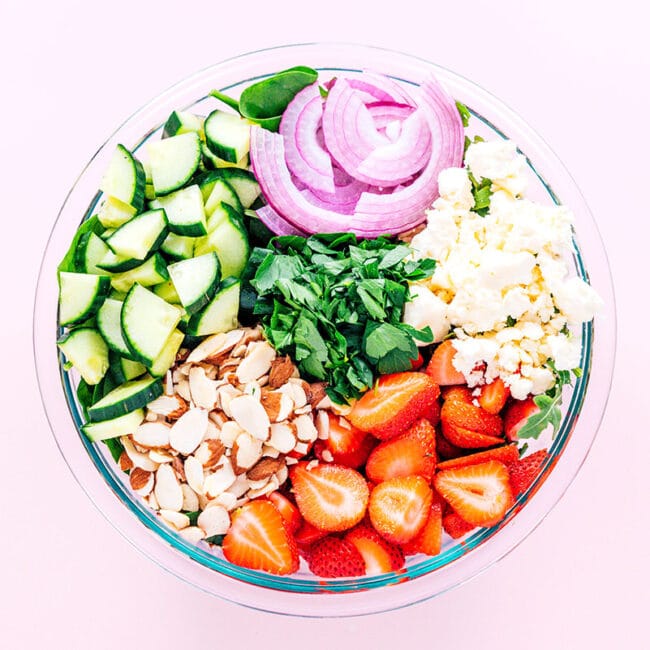
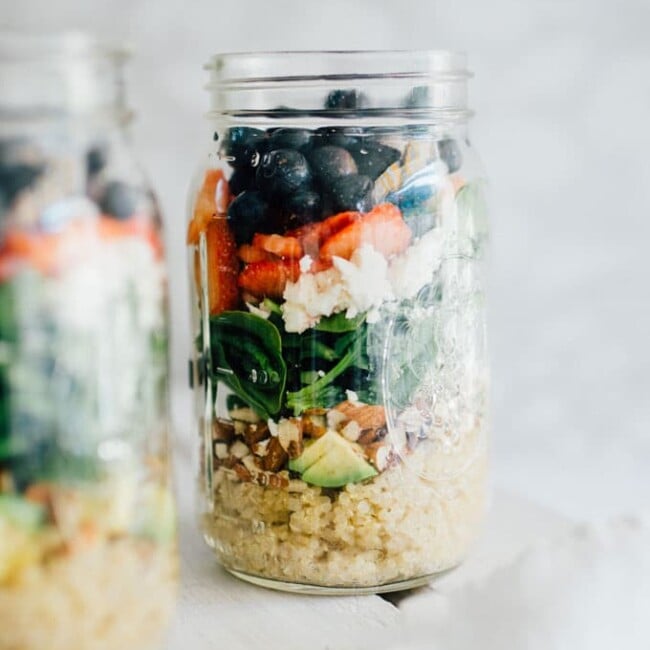
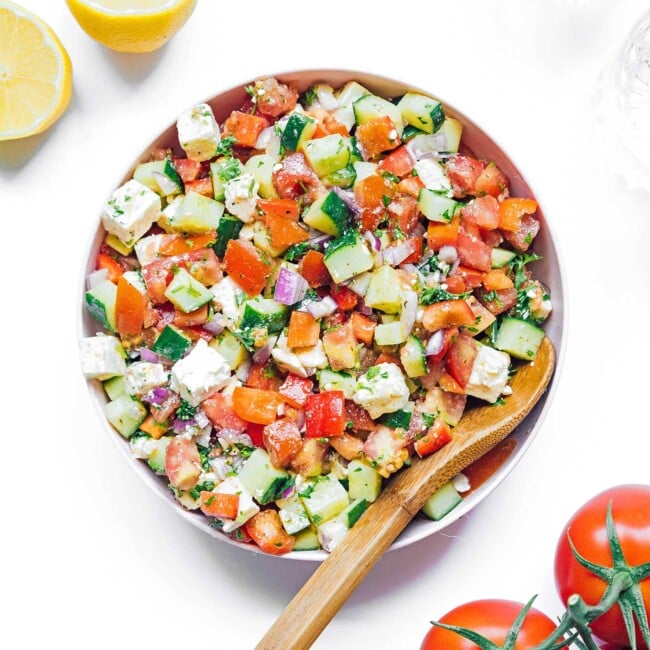
Leave a Comment